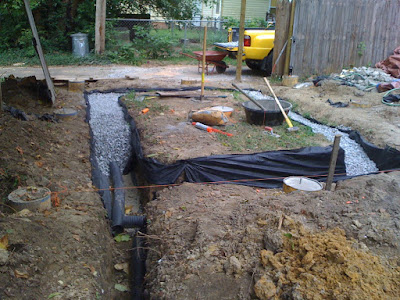
What a glorious thing, to be done with something. All of the digging I did taught me a lot about planning. I've talked about this a few times, but it took me making the same mistake again and again to finally get it. I think that the most critical step to do right in a foundation is the lay out and marking of the site. If you are like me and you rush through that part you will pay for it again and again with all of the digging you have to redo. If I were starting this project over right now I would do a lot of things differently. First I would have some one help me mark out the site. Digging I can do on my own, but you need at least two sets of hands to mark out a site. You cannot hold both ends of a tape measure all by your lonesome. Next I would not do a single bit of digging, or marking until I had completely cleared my site of problems like fence posts, tree roots, ect. Once it was clear I would mark and dig ONLY the pier holes. If I were redoing this project I would not do anything with the bale foundation until I put up the roof framing. Right now One of the big obsticles I am dealing with in trying to figure out how to get my beam up in there air is the fact that I have a big gravel filled trench in the middle of my site.
A side note about tools related to the gravel. I discovered yet another situation where the right tool is really critical. To dig a hole with a shovel, you want a spade. It is shaped like a spade, all pointy on the end. To shovel gravel you do not want a spade, you will be miserable. You want a flat shovel. The first time I shoveled gravel I used a spade and it was difficult miserable work. I got a flat shovel and proceeded to unload four truck loads of gravel, and it wasn't even bad.








